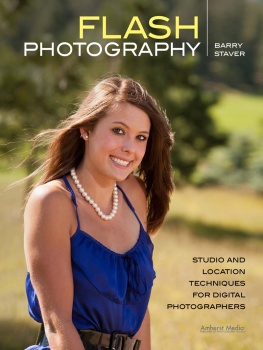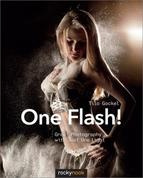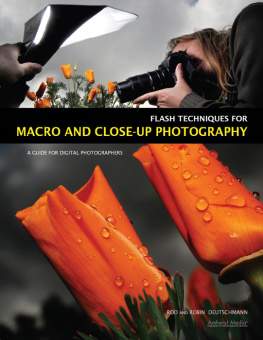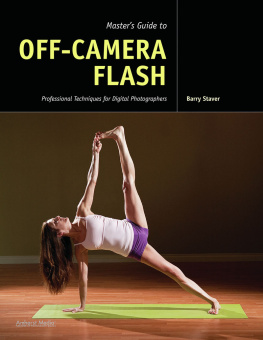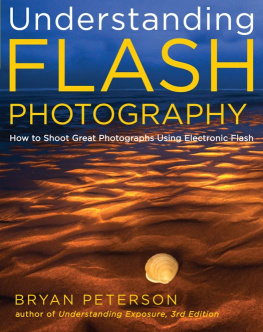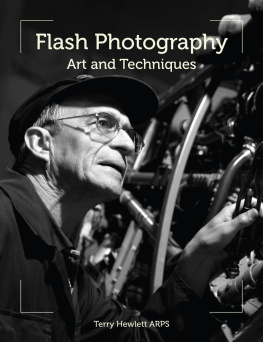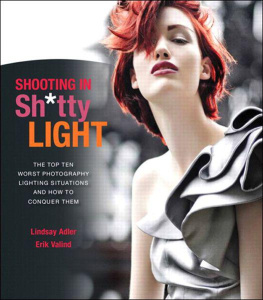Copyright 2013 by Barry Staver.
All rights reserved.
All photographs by the author unless otherwise noted.
Published by:
Amherst Media, Inc.
P.O. Box 586
Buffalo, N.Y. 14226
Fax: 716-874-4508
www.AmherstMedia.com
Publisher: Craig Alesse
Senior Editor/Production Manager: Michelle Perkins
Assistant Editor: Barbara A. Lynch-Johnt
Editorial Assistance from: Carey A. Miller, Sally Jarzab, John S. Loder
Business Manager: Adam Richards
Marketing, Sales, and Promotion Manager: Kate Neaverth
Warehouse and Fulfillment Manager: Roger Singo
ISBN-13: 978-1-60895-528-2
Library of Congress Control Number: 2012936519
Printed in The United States of America.
10 9 8 7 6 5 4 3 2 1
No part of this publication may be reproduced, stored, or transmitted in any form or by any means, electronic, mechanical, photocopied, recorded or otherwise, without prior written consent from the publisher.
Notice of Disclaimer: The information contained in this book is based on the authors experience and opinions. The author and publisher will not be held liable for the use or misuse of the information in this book.
Check out Amherst Medias blogs at: http://portrait-photographer.blogspot.com/
http://weddingphotographer-amherstmedia.blogspot.com/
T ABLE OF C ONTENTS




P REFACE
L ike my previous book, The Masters Guide to Off-Camera Flash (Amherst Media, 2011), this book is geared to be informative, interactive, and fun. It should improve your studio and location flash photography, advancing you to higher levels of shooting. (Note: Beginning with The Masters Guide to Off-Camera Flash is recommended if you are new to flash photography. It is also a good reference source for anyone advancing to multiple-flash setups, which is where this book begins.)
Working through this book will fine-tune your existing lighting skills and add a ton of new techniques to your repertoire. Did you notice the phrase working through this book, not reading this book? There are statistics showing that you achieve a better retention rate when you dont just read about a subject; if you really want to learn, you need to read and doyou need to experience the subject matter for yourself. Thats why each chapter of this book features assignments for you to work on. Read first, then give the assignment a try. In addition to helping you learn, this should encourage you to test these new techniques and equipment before going out on a paid assignment.
That said, flash photography has a tendency to become technical and mechanical. Its easy to get wrapped up in light ratios, watt-second comparisons, light-modifier selections, and a host of other techie issues. If we lose sight of our creativity and spontaneity in favor of getting our lighting devices set up perfectly it can be detrimental to the subject being photographed. Well try to avoid that pitfall.
Youll also notice sidebars throughout the book. These contain stories and anecdotes from my experiences in over forty years of photography. I share some of my Murphys Law moments, toostories where anything that could go wrong did go wrong. Having a plan B (and often a plan C) in the back of our minds when were shooting is the best way to beat Murphy at his game. I hope that sharing my experiences may save you time and trouble when you encounter the same situations one day.
1. T HE I MPORTANCE OF L IGHT
W hat makes a photograph stand out? What makes it successful? Why are some exciting to look at and others quite boring? Going straight to the bottom line, a successful photograph hits the viewer on the emotional level. It stirs something inside of us. This is intangible for sureit cant be measured empiricallybut its what separates the great photographs from the mundane. Each of us will react differently, of course, based on our history, background, education, and our points of view. But each of us will react through our emotionslove, hate, joy, or sadness.
L IGHT: T HE M AIN I NGREDIENT IN THE M IX
As we relate to a strong image, all of our senses kick into gear. Most of us will react happily with oohs and aahs to a photograph of a newborn baby (image 1-1). As parents or grandparents, we see our own children in the image. A curmudgeon, on the other hand, might see a potentially fussy infant with dirty diapersor the crying baby seated next to them on a long flight. Notice that this image is presented in black & white, which is a much better medium than color to convey emotion. Were not looking at the infants skin tones, which can be reddish and blotchy at two weeks of age, nor are we distracted by clothing colors.

IMAGE 1-1. An infant in Dads arms. This studio photograph, created on a dark backdrop, was lit with two Dynalite flash heads. It was then converted to black & white.

IMAGE 1-2. this elderly woman was photographed in open shade.
Image 1-2, a photograph of an older woman, sets off different emotions in most of us. We react in a more sympathetic way to portraits of our senior population. Younger viewers may think of their grandparents; those of us who are a bit more mature may even see our own mortality in such photographs. A closer inspection of her eyes reveals a lifetime of memories. As well see throughout this book, the eyes play an important role in photography as well as life in general. Never take your vision for granted.
Although the lighting is different in images 1-1 and 1-2, its a key component of their success. As a photojournalist, my goal is generally to capture specific moments in time as they happen, meaning that I frequently dont have the time or opportunity to control the lighting. On shoots where Im able to adjust and control the light, my documentary shooting style still comes throughbut with more technical polish. There was enough time before these images were taken to properly plan and light each scene. Both have soft lighting.
Side-lighting and a dark background provide contrast in the newborn photograph and our emotions are further enhanced by the size relationship between the baby and the dads arm and hand. Very flat, shadowless lighting sets the tone for viewing the elderly womans portrait. Each type of lighting creates its own mood. As photographers, we must have a mood in mind to share with viewers; each viewer reacts to images with his or her own vision and mood.
Light is the most important ingredient for successful photography. A photographer using good lighting and a cheap camera beats one with poor lighting and the most expensive, high-end camera any day. You may remember the advertising slogan of a well-known camera brand that stated, If the photograph matters, the camera matters. This same company posted the following statement on Facebook:
Next page
